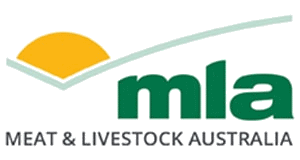Subscribe to MLA's Quarterly Feed e-newsletters
Stay informed with the latest red meat and livestock industry news, events, research and marketing.
Carbon storage
Work completed in the carbon storage includes activities aimed at increasing carbon sequestered in above and below ground biomass which will provide multiple benefits. Appropriate management practices can lead to increased land and animal productivity, as well as improved environmental sustainability.
Key measures of success in 2030
In 2030, success will be measured by:
- At least three new commercially available legumes, shrubs or tree species able to store soil carbon, boost pasture productivity and live weight gain in livestock.
- Soil carbon storage levels in 30% of grazing lands increased by 50–100kg CO2e/ha/year.
- Integration of shade and shelterbelts on 10 million hectares (southern Australia focus) of available 355 million hectares of grazing area nationally, increasing livestock productivity by 10% and storing more than 25MT CO2e emissions per annum.
- Investigation of alternative means of regrowth control that maximise carbon storage without reducing productivity.
- Promotion of cost effective agroforestry systems for dual benefits.
Current activities
MLA in collaboration with industry, government and research partners, is investing in research, development and adoption projects to enable industry to move toward the CN30 target.
Examples of research activities include:
- developing new legumes, pastures and shrubs to build feedbase and carbon stocks
- advancing soil carbon sequestration methods and measurement technology
- improving integration of trees and shrubs for improved carbon storage, animal health and biodiversity
- optimising vegetation regrowth management
- optimising carbon storage in dead woody biomass
- improved accounting of woody thickening in National Greenhouse Gas Inventory
- investigation of carbon storage increases from dung beetle activity in grazing lands.
Subscribe to MLA's Quarterly Feed e-newsletters
Stay informed with the latest red meat and livestock industry news, events, research and marketing.


